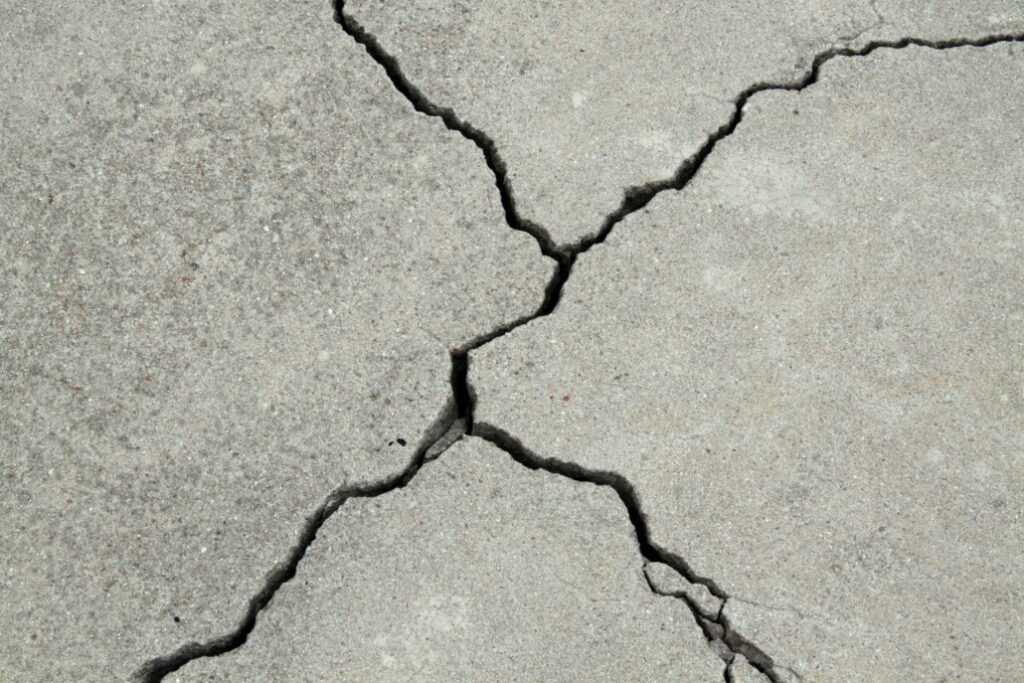Recommendations for Concrete Foundation Crack Repair
First, we must discuss what caused the foundation to crack. There are many factors that can contribute to the cracking of your foundation and they are almost always caused by external forces applying stress to the concrete. Understand that concrete is a rigid material that does not accept movement or stress well. Because of this, when stress or movement is applied, the concrete will not absorb it, causing it to crack. This stress could be caused by intruding expanding tree roots, which could lift the concrete to the point it cracks. Poor soil preparation below the concrete lessens the ability of the concrete to support pressure applied by weight of the structure it is supporting. If there is expansive soil under the foundation, the slightest intrusion of moisture could cause the soil to begin expanding, causing an upward pressure to be placed on the foundation, again causing it to crack. Expansion and contraction of the concrete foundation caused by the freeze and thaw cycle could also cause the concrete to crack. These are a few of the causes of concrete cracks.
To repair cracks, the first thing you must do, if you can, is eliminate the causes of the cracks. Many of these causes cannot be corrected or controlled; therefore, you may never be able to perform a permanent structural repair with conventional cementitious repair materials.
Because of the constant movement of the concrete, any materials that become ridged or brittle might not be the best materials to use for crack repairs. Cementitious materials, as well as epoxies, cure to become brittle and therefore are not the best materials for crack repair. What is needed is a material with high compressive strength, a decent amount of elongation, high bond strength and a resistance to UV. The answer is “Polymers.” FLEXKIT is just that. Compressive strengths as high as 12,000 psi.,elongation up to 30% with resilience of 99.3%, with outstanding adhesion, and unaffected by the UV rays of the sun. FLEXKIT is the perfect material for making lasting repairs on cracked concrete.
How to use FLEXKIT to repair cracked concrete.
PREP
Clean the crack. Use a V-Groove grinding wheel for this. Not only will it clean the concrete on both sides of the crack, it will also remove any loose material and leave a clean, sound surface for proper adhesion. Apply a thin coat of primer to both sides of the crack, making sure not to leave primer puddled inside the crack. The primer will make its way into the pores of the concrete and as it cures, it will expand, providing a strong bond between the primer and the concrete.
APPLY
Mix the FlexKit 5 with sand as described in the mixing instructions and then apply to the crack with a trowel, forcing the FlexKit 5 into the crack. Make sure you have filled all voids to the point the crack is not able to accept any more. Smooth with trowel.
FINISH
If additional smoothness is desired, a stone grinding wheel mounted on a grinder will make quick work of a final grind, leaving you with a very smooth surface able to bond to any material that will bond to concrete.
Here are some customers of JESSUPPY and projectsà
The system that we use on Fremont Streetà
Another huge plus is that the flexible concrete is VOC free and is environmentally friendly, it also cures in 15 to 90 minutes and is 12,000 psi.
Let me know your thoughts and please share this with others around the city that could use the product.
Best Regards,
David J. Berkowitz
Sales Representative

O- (702)651-8100
F- (702)651-8181
C- (702)-249-0571

